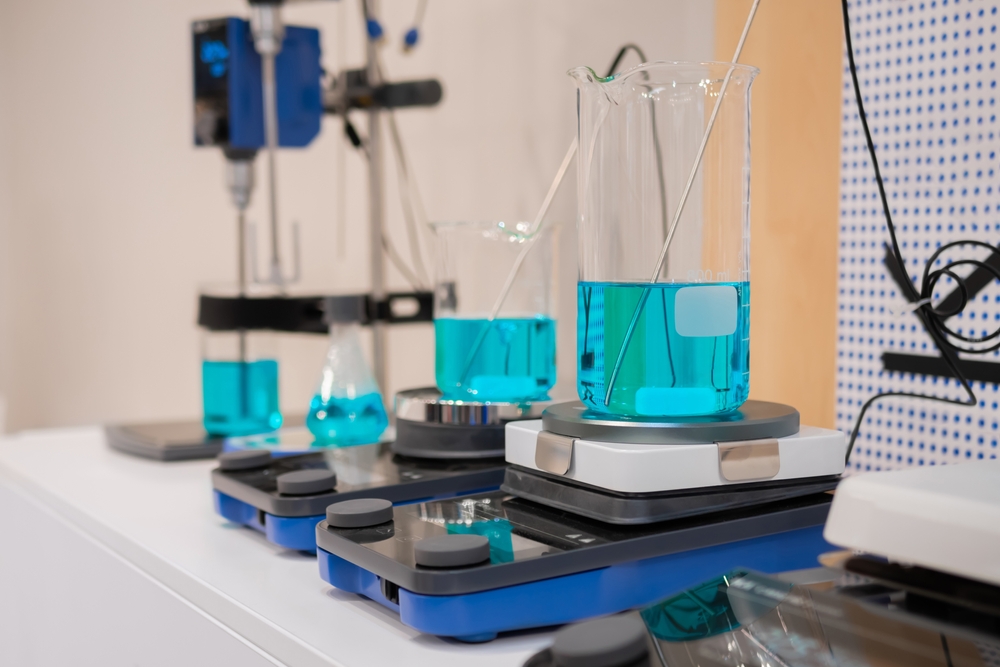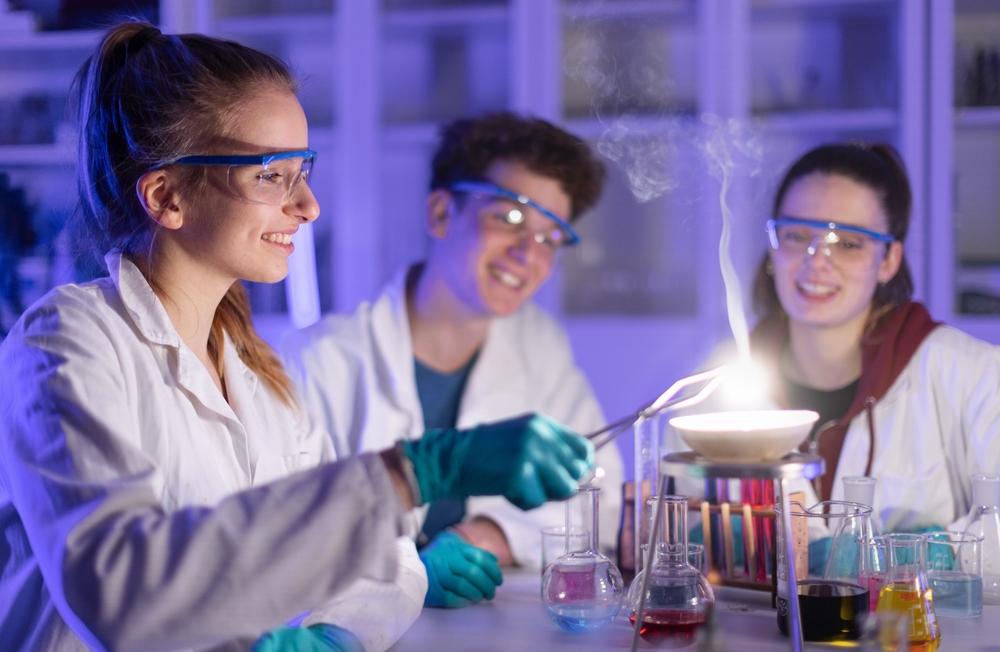
In the dynamic world of science education, top lab equipment is paramount for providing students with hands-on laboratory experiences. These learning experiences enhance theoretical concepts and foster a deeper understanding and appreciation for the scientific process.
Central to this experiential learning are the tools and equipment used in laboratory settings. From basic glassware to sophisticated instruments, each piece plays a crucial role in facilitating engaging and effective experiments.
In this guide, we will explore the essential science lab equipment that science educators should have in their arsenal. We will categorize the equipment into sections, including glassware, equipment, instruments, safety gear, and more. By understanding the functions and uses of these tools, educators can create enriching lab experiences that inspire curiosity and discovery in their students.
Lab Equipment for Student Safety and Protective Gear
Safety is of utmost importance in any school science lab, as it ensures the well-being of students and educators alike. In a lab setting, students are exposed to various chemicals, equipment, and potentially hazardous materials.
Therefore, it is crucial to instill a culture of safety from the outset. Emphasizing the importance of following safety protocols, wearing appropriate protective gear, and understanding the potential risks associated with each experiment is key.
By prioritizing safety, educators in elementary, middle school, and high school create a secure learning environment and teach students valuable lifelong skills in risk assessment and mitigation.
1. Safety goggles
Safety Goggles protect the eyes from chemical splashes, flying debris, and other hazards that can cause injury. Wearing goggles can prevent serious eye injuries that may result from accidents in the lab.
2. Lab Coats
Lab coats protect students’ clothing from spills, splashes, and stains that may occur during experiments involving chemicals, liquids, or other materials. This helps to prevent skin exposure to potentially harmful substances.
Furthermore, lab coats provide a barrier between the wearer and the experiment, helping to maintain hygiene standards in the lab. This is especially important when working with biological materials.
3. Gloves
Gloves protect students from harmful chemicals, acids, and other hazardous substances that can cause skin irritation or burns. Gloves also help maintain a clean and hygienic environment by preventing the spread of bacteria and other contaminants.
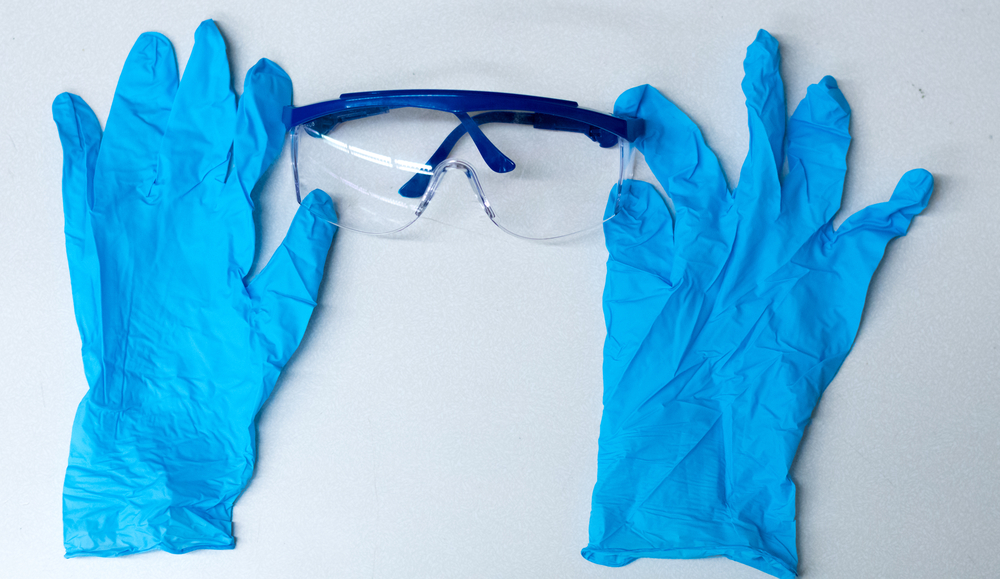
4. Safety Showers
Safety showers are an essential safety feature in laboratories, including school labs, where students may come into contact with hazardous chemicals. Safety showers provide a quick way to rinse off chemicals that may have splashed on the skin or clothing, helping to minimize the effects of chemical exposure. They are typically required by safety regulations and guidelines for laboratory facilities to ensure the safety of students and teachers.
5. Eyewash Stations
Eyewash stations are essential safety equipment in laboratories where chemicals or hazardous materials are handled. They provide a quick and effective way to flush the eyes in case of accidental exposure to chemicals or foreign objects. It is recommended that eyewash stations be easily accessible, located within 10 seconds of the hazard, and that they are inspected regularly to ensure they are functioning properly.
Related Reading: School Chemistry Lab Furniture: Safety and Functionality Combined
Glassware for Mixing and Measuring
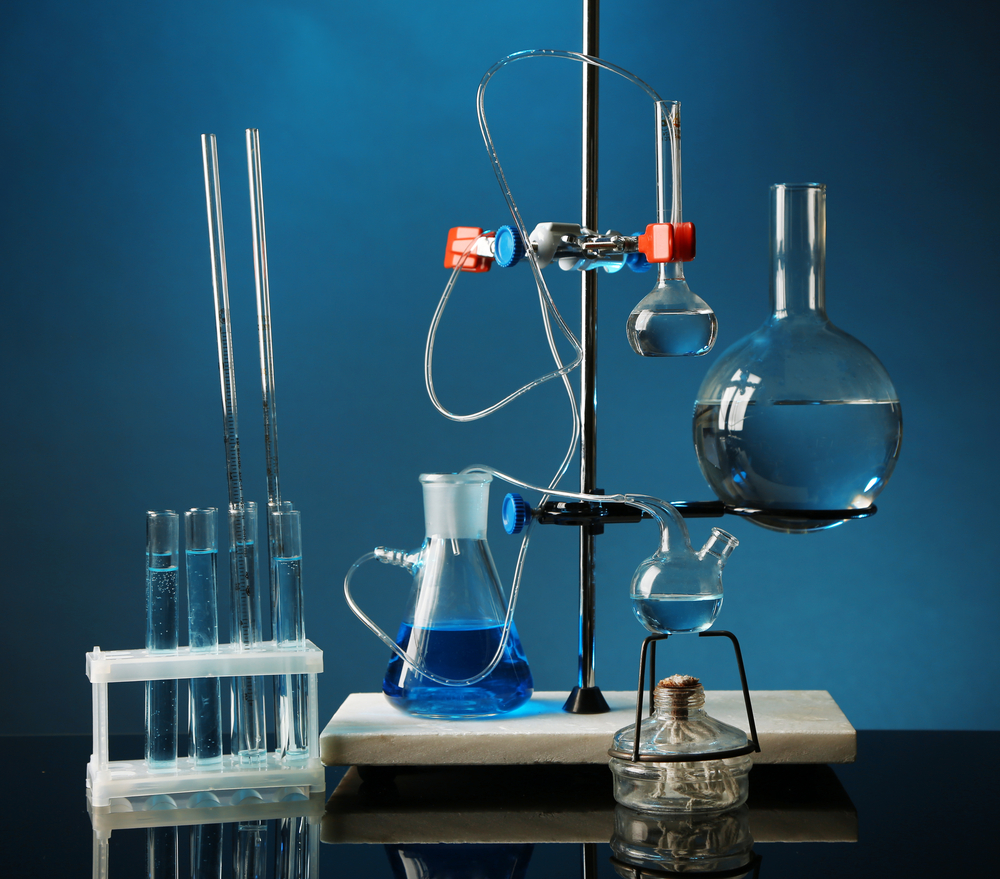
Glassware is a fundamental component of any science laboratory, serving a multitude of purposes, from precise measurement to controlled mixing of chemicals.
The selection of the appropriate glassware is crucial, as each piece is designed for specific tasks, ensuring accurate and safe experimentation.
In this section, we will explore the various types of glassware commonly used for mixing and measuring in the science lab, highlighting their unique features and applications. Understanding the functions of each piece of glassware is essential for students and educators alike, as it enables them to conduct experiments with precision and efficiency.
1. Beakers
Beakers are cylindrical containers with a flat bottom and a spout for pouring. They are commonly used in school science labs for mixing, heating, and measuring liquids.
Beakers come in various sizes, typically measured in milliliters or liters, and are made of heat-resistant borosilicate glass to withstand high temperatures. They are marked with graduated lines to indicate approximate volume measurements.
Beakers are versatile and essential for a wide range of laboratory tasks, from simple mixing to more complex experiments.
2. Flasks
In school science labs, you’ll typically find several types of flasks, each designed for specific purposes:
- Erlenmeyer Flask: This is a cone-shaped flask with a narrow neck. It’s used for mixing and storing liquids. The narrow neck helps prevent splashes, and typically comes with stoppers.
- Florence Flask: Similar to an Erlenmeyer flask but with a round bottom, this flask is used for boiling liquids. The round shape allows for even heating.
- Volumetric Flask: This flask has a precise volume measurement at a specific temperature, typically used for preparing solutions of a known concentration.
- Boiling Flask: Also known as a round-bottom flask, it’s used for heating and boiling liquids. The round shape allows for uniform heating.
- Filter Flask: This flask has a sidearm to which a vacuum can be applied, used with a Büchner funnel for vacuum filtration.
- Recovery Flask: This type of flask is used to collect and condense vapors during distillation processes.
- Flat Bottom Flask: These flasks have a flat bottom and are used for reactions that require stirring or heating on a hot plate.
- Reaction Flask: These are specialized flasks designed for specific chemical reactions, often with ground glass joints for connecting to other glassware.
Each type of flask serves a specific purpose, and using the right flask for the task is important for safety and accurate results.
3. Test Tubes and Test Tube Racks
Test tubes are cylindrical glass tubes with rounded bottoms, primarily used to hold, mix, or heat small quantities of liquids or solids. They are typically used in school science labs for conducting experiments, chemical reactions, and observations.
Test tubes come in various sizes and are typically made of borosilicate glass to withstand heat and chemical reactions.
Test tube racks are specially designed holders that support and organize test tubes. They are typically made of plastic or wood and come in various sizes to accommodate different numbers of test tubes.
Test tube racks are essential for safely storing and transporting test tubes, as well as for facilitating easy access during experiments.
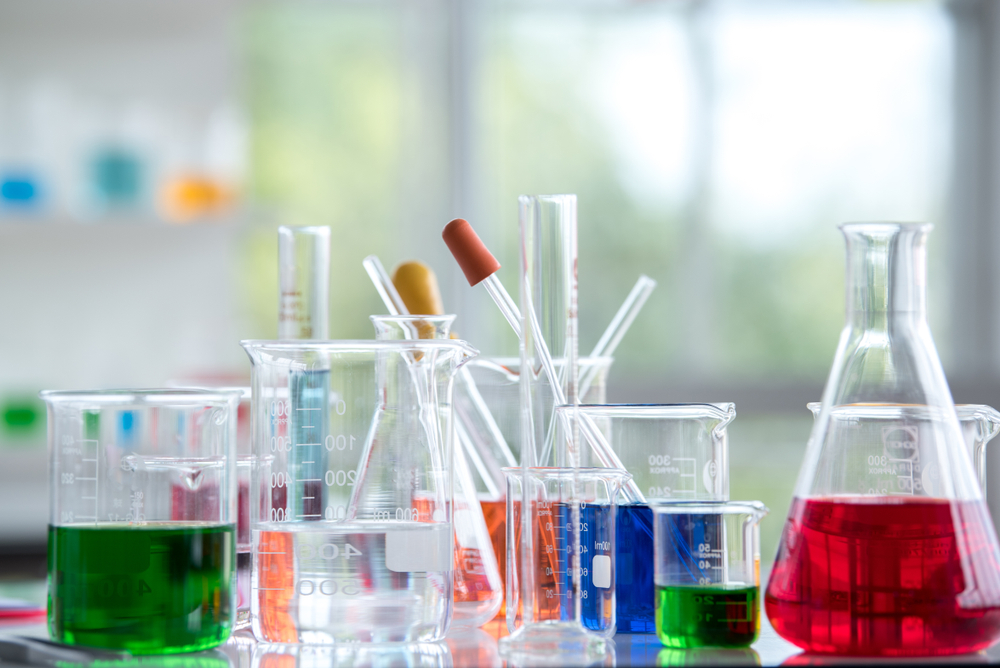
4. Graduated Cylinders
Graduated cylinders are tall, cylindrical containers with a narrow diameter and a uniform scale marked along the side to measure the volume of liquids accurately. They are commonly used in school science labs for measuring and transferring liquids.
Graduated cylinders come in various sizes, typically measured in milliliters or liters, and are made of glass or plastic. They are designed to allow for precise measurement of liquid volumes, making them essential for conducting experiments where accurate volume measurements are required.
5. Pipettes and Droppers
Pipettes and droppers are both used for transferring small amounts of liquids in school science labs, but they differ in their design and capacity.
- Pipettes are slender, calibrated tubes used to measure and transfer precise volumes of liquid. They come in various types, including graduated pipettes, which have markings for measuring specific volumes, and volumetric pipettes, which are designed to deliver a single, accurate volume. Pipettes are essential for conducting experiments that require precise measurements, such as titrations and dilutions.
- Droppers, on the other hand, are simple glass or plastic tubes with a bulbous top used to draw and dispense small amounts of liquid. They are less precise than pipettes and are commonly used for adding reagents drop by drop or transferring small amounts of liquids in qualitative experiments.
Droppers are not suitable for measuring precise volumes, but are useful for quick and easy transfers in the lab.
6. Burettes
Burettes are long, graduated glass tubes with a stopcock at the bottom, used for dispensing precise volumes of liquid. They are commonly used in school science labs for titrations and other experiments that require accurate volume measurements.
Burettes are mounted vertically on a stand and are filled with the liquid to be dispensed. The stopcock at the bottom allows for precise control of the liquid flow, enabling the user to add the liquid drop by drop until a reaction is complete or a desired endpoint is reached.
Burettes are essential for experiments that require precise and controlled dispensing of liquids.
7. Watch Glass
A watch glass is a circular, slightly concave piece of glass that is used in science labs for various purposes.
- Its primary use is as a cover for beakers or evaporating dishes to prevent contamination or splashing during heating or storage.
- Watch glasses can also be used as a shallow dish for holding small amounts of liquid or solid samples for observation or evaporation.
- They are often used with filter paper for gravity filtration or as a surface for drying small crystals.Watch glasses are essential tools in the lab due to their versatility and durability.
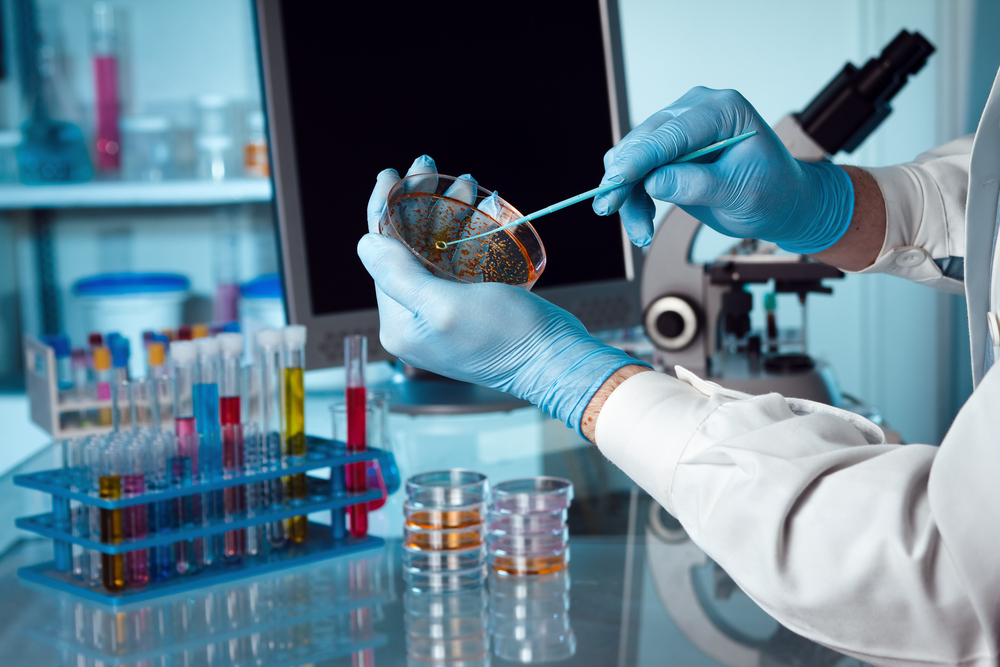
8. Petri Dishes
A petri dish is a shallow, cylindrical, lidded dish typically used in laboratories for the cultivation of microorganisms such as bacteria, fungi, or small mosses. It is usually made of glass or clear plastic and comes in various sizes.
9. Funnels
Funnels are cone-shaped utensils with a narrow stem at the bottom, used for guiding liquids or powders into containers with small openings. They are commonly used in school science labs for transferring liquids or dry substances between containers without spillage.
Funnels come in various sizes and materials, such as glass, plastic, or metal, depending on the intended use. They are essential for maintaining a clean and organized workspace during experiments, as they help prevent spills and ensure accurate transfers of substances.
10. Evaporating Dish
Evaporating dishes are shallow, flat-bottomed containers made of ceramic or borosilicate glass, designed for evaporating liquids to leave behind solids. They are commonly used in school science labs for tasks such as concentrating solutions, crystallizing compounds, or recovering dissolved solids.
Evaporating dishes are placed on a heat source, such as a hot plate or Bunsen burner, to gently heat the liquid, causing it to evaporate and leaving the solid residue behind. The shallow design of evaporating dishes allows for efficient evaporation and easy removal of the solid residue.
11. Mortar & Pestle
A mortar and pestle is a tool used for grinding and mixing substances in the laboratory.
The mortar is a bowl-shaped container, typically made of porcelain, ceramic, or glass, while the pestle is a blunt, rod-shaped tool used for crushing and grinding.
In school science labs, mortar and pestle sets are commonly used to grind solids into powders or to crush and mix ingredients together. They are particularly useful for preparing samples for analysis, grinding chemicals for reactions, or creating powdered substances for experiments.
The grinding action of the pestle against the mortar helps to break down substances into smaller particles, allowing for more uniform mixing or dissolution in liquids.
Related Reading: Exploring the Role of Science Laboratories in Modern Schools
Lab Equipment Required for Heating and Stirring
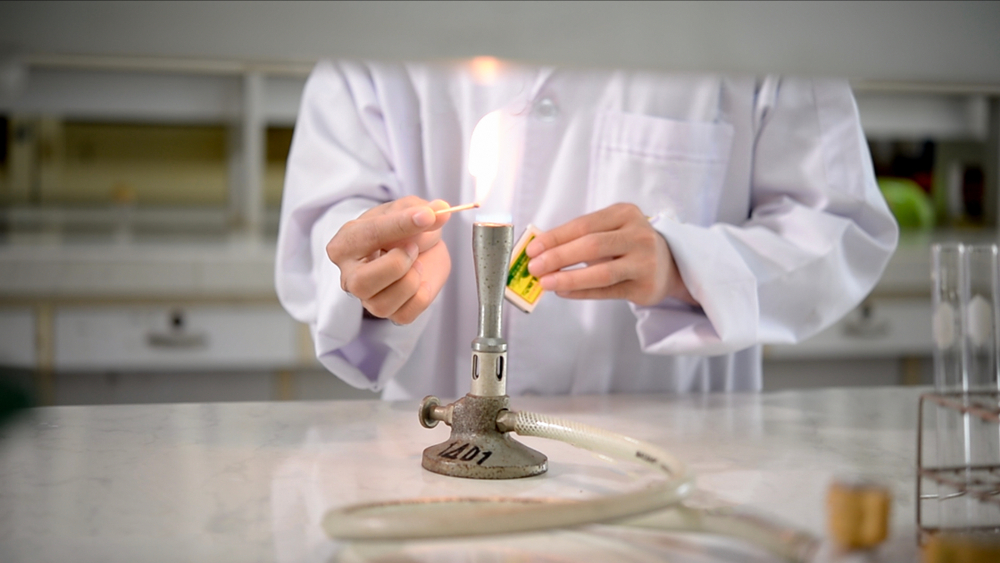
Heating and stirring are essential processes in many science experiments, requiring specific lab equipment to ensure accurate and controlled conditions.
In the science lab, various tools are used for heating substances safely and for stirring solutions to achieve homogeneity. Understanding the different types of lab equipment available and their uses is crucial for conducting experiments effectively and safely.
In this section, we will explore the lab equipment required for heating and stirring in the science lab, highlighting their functions and importance in experimental procedures.
1. Bunsen Burner
A Bunsen burner is a common piece of laboratory equipment used for heating, sterilization, and combustion. It consists of a metal tube connected to a gas supply, with adjustable air vents and a gas valve at the base.
In school science labs, Bunsen burners are typically connected to a natural gas supply or a propane tank. The gas is ignited at the burner’s base, and the flame can be adjusted to produce different types of flames depending on the experiment’s requirements.
The blue flame produced by a Bunsen burner is used for heating substances in test tubes, beakers, or crucibles. The air vents can be adjusted to control the flame’s intensity, allowing for precise heating of substances in the lab.
Bunsen burners are essential tools for a wide range of experiments that require controlled heating.
2. Hot Plates and Stirrers
- Hot plates are heating devices used in school science labs to heat glassware or its contents. They consist of a flat, heat-resistant surface with adjustable temperature controls. Hot plates are often used as an alternative to Bunsen burners when an open flame is not desirable or practical.
- Stirring rods, also known as glass rods, are used to manually stir liquids in laboratory settings. They are typically made of borosilicate glass and come in various lengths and thicknesses. Stirring rods are essential for mixing substances and ensuring homogeneity in solutions.
- Magnetic stirrers are devices used to stir liquids using a magnetic field. They consist of a magnetic stir bar placed in the liquid and a magnetic stirrer plate beneath the container. When the stirrer plate is activated, it creates a rotating magnetic field that causes the stir bar to spin, stirring the liquid.
Magnetic stirrers are commonly used in school science labs for continuous stirring of solutions without the need for manual intervention.
3. Crucibles
Crucibles are small, cup-shaped containers made of ceramic, porcelain, or metal that are used in school science labs for heating substances to high temperatures. They are typically used for processes such as melting, ashing, and calcination.
Crucibles are resistant to high temperatures and are designed to withstand the direct flame of heating lab equipment such as a Bunsen burner or a hot plate. They are often used with crucible tongs for safe handling when hot. Crucibles are essential tools for conducting experiments that require high-temperature heating in a controlled environment.
4. Tongs
Tongs are tools used in school science labs for handling hot objects, such as beakers, flasks, crucibles, or other lab equipment. They consist of two arms joined at one end, with a grip or clamp at the other end.
Tongs are typically made of metal, with heat-resistant coatings or tips to protect the user from burns. They are essential for safely moving hot objects and materials in the lab without direct contact, minimizing the risk of accidents or injuries.
5. Scoop Spatulas
Scoop spatulas, also known as scoopulas, are versatile tools used in school science labs for transferring dry or solid materials. They consist of a metal or plastic handle with a flat, spoon-shaped blade at one end. The blade is typically slightly curved and has a rounded tip, making it ideal for scooping powders, crystals, or other solid materials.
Scoop spatulas are commonly used for transferring substances from one container to another, such as from a reagent bottle to a weighing boat. They are also useful pieces of lab equipment for mixing and stirring solid materials in laboratory settings.
Lab Equipment for Observation and Analysis
Observation and analysis are fundamental aspects of scientific inquiry, requiring precise instruments to gather and interpret data. In the school science lab, various instruments are used to observe phenomena and analyze samples, providing valuable insights into the natural world.
Understanding the different types of lab equipment and instruments available and their functions is essential for students to conduct experiments effectively and draw meaningful conclusions.
In this section, we will explore the instruments required for observation and analysis in the school science lab, highlighting their importance in scientific investigations.
1. Magnifying Glass
A magnifying glass, also known as a hand lens, is a simple optical instrument used to magnify objects for closer inspection. It consists of a convex lens mounted in a frame with a handle.
In school science labs, magnifying glasses are commonly used to observe small objects, such as insects, plant parts, or mineral samples.
They can also be used to read fine print or details on specimens. Magnifying glasses are handy lab equipment because they are portable and easy to use, making them a valuable tool for enhancing observations in the lab.
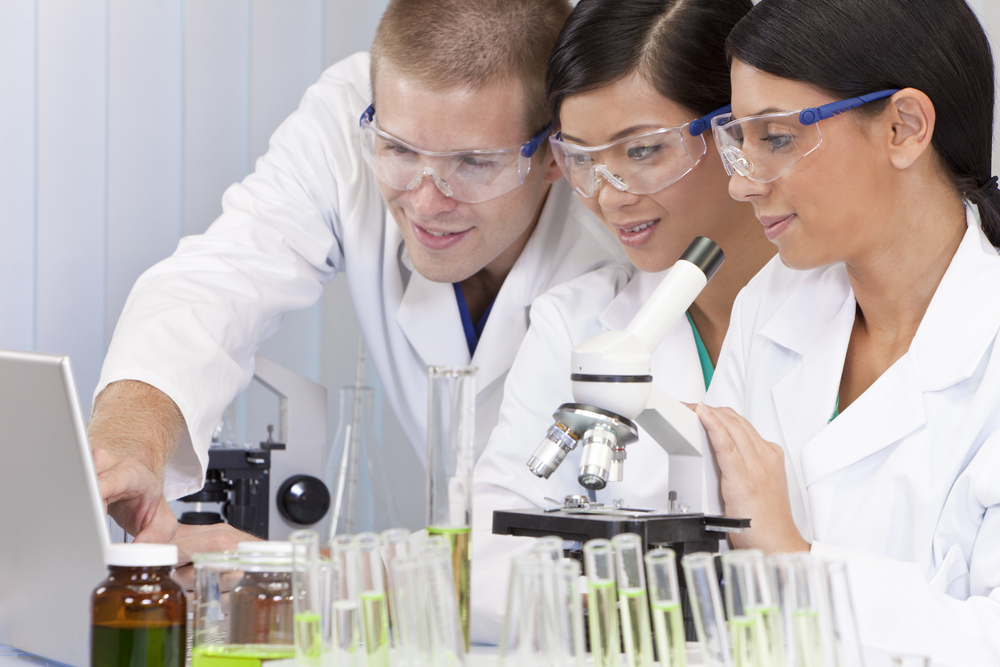
2. Microscopes
When it comes to lab equipment, microscopes are essential tools in school science labs to magnify and observe small objects or details that are not visible to the naked eye.
They consist of an optical system that includes lenses and a light source to illuminate the specimen. Microscopes can magnify objects hundreds or even thousands of times, revealing details that would otherwise be invisible.
In school labs, microscopes are commonly used for studying cells, tissues, microorganisms, and other small structures. They are invaluable for teaching biology, microbiology, and other life sciences, as well as for conducting research and investigations in various scientific fields.
3. Thermometers
Thermometers are instruments used to measure temperature in school science labs. They consist of a bulb containing a temperature-sensitive liquid, such as mercury or alcohol, connected to a graduated scale.
When the temperature changes, the liquid expands or contracts, causing it to rise or fall in the narrow tube, indicating the temperature on the scale. Thermometers are used to measure the temperature of liquids, gases, and solids in various experiments and processes.
They are essential lab equipment for conducting experiments that require precise temperature control, such as chemical reactions, heating substances, or monitoring environmental conditions.
4. pH Meters and Litmus Paper
- pH meters are devices used to measure the acidity or alkalinity of a solution. They consist of a probe that is dipped into the solution and connected to a meter that displays the pH value.
pH meters are lab equipment used in school science labs to accurately measure the pH of various substances, such as water, soil, or chemicals. They are essential for experiments that require precise pH control, such as titrations or enzyme reactions. - Litmus paper is a type of paper treated with a natural dye that changes color in response to acidity or alkalinity. It is used in school science labs as a simple and quick way to test the pH of a solution.
Litmus paper turns red in acidic solutions and blue in alkaline solutions. It is often used to test the pH of household substances, such as vinegar or baking soda, and to demonstrate the concept of pH to students.
5. Filter Paper
Filter paper is a porous paper used for separating solids from liquids or for drying substances. It is used in school science labs in techniques such as filtration, where a liquid mixture is poured through the filter paper, allowing the liquid to pass through while trapping the solid particles.
Filter paper comes in various grades and pore sizes, depending on the specific application. It is essential for experiments that require the separation of solids and liquids, such as isolating precipitates or purifying substances.
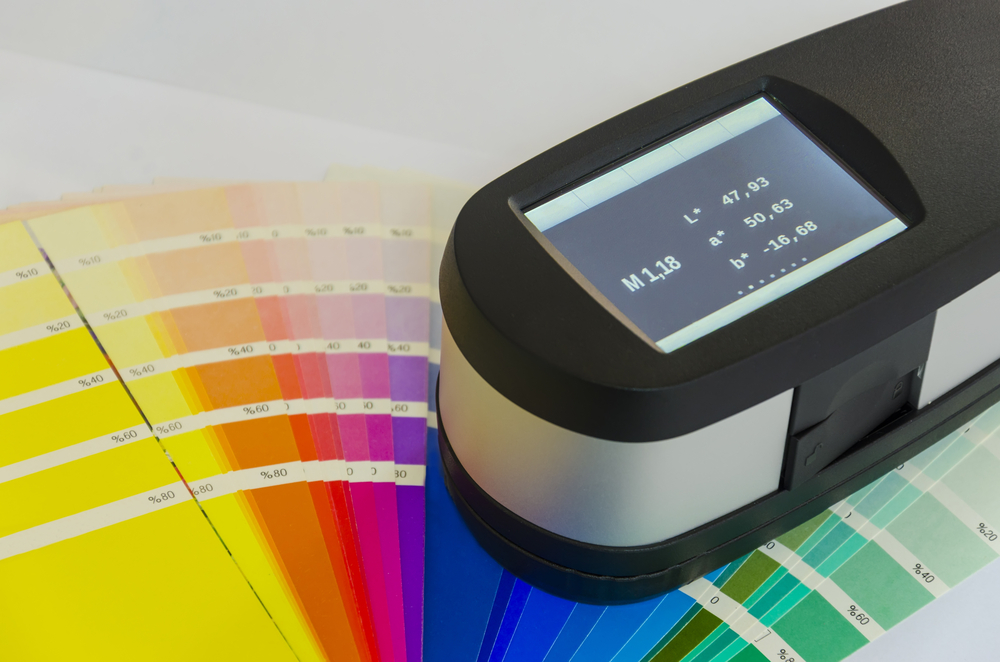
6. Spectrometers and Spectrophotometers
Spectrometers and spectrophotometers are expensive lab equipment that are typically only found in colleges, but may also be used in high schools and advanced science programs. These instruments are used for various experiments and analysis in subjects like chemistry, physics, and biology.
Spectrometers are used to measure properties of light over a specific portion of the electromagnetic spectrum, while spectrophotometers are used to measure the intensity of light at different wavelengths. As lab equipment, they are valuable tools for teaching and learning about the principles of spectroscopy and chemical analysis.
7. Weighting Machines
Laboratory experiments frequently involve very small quantities of reagents, usually in units of micrograms. The desired and exact amounts of the reagents are difficult to measure with general lab equipment like a physical balance device, so these weighing machines come into the picture. These devices can weigh minuscule quantities of substances.
8. Spring Balance/Newton Meter
A spring balance, also known as a Newton meter, is a simple piece of lab equipment used to measure the force exerted on an object due to gravity. It consists of a coiled spring with a hook at one end and a scale indicating force at the other end.
When an object is hung from the hook, the spring stretches proportionally to the force exerted by the object’s weight, and the scale indicates the force in units of newtons (N) or grams-force (gf).
In school science labs, spring balances are commonly used to measure the weight of objects or the force required to stretch or compress a spring. They are essential lab equipment for experiments involving force, weight, or mass, providing a simple and portable means of measurement.
9. Ammeter
An ammeter is a device used to measure electric current in a circuit. It is connected in series with the circuit, so that all the current flowing through the circuit passes through the ammeter.
Ammeters are lab equipment typically designed to measure currents in the milliampere (mA) or ampere (A) range, depending on the circuit’s requirements. In school science labs, ammeters are commonly used to measure the current flowing through various electrical components or circuits in experiments involving electricity and magnetism.
They are essential for ensuring the proper functioning and safety of electrical circuits, as well as for teaching students about electric current and its properties.
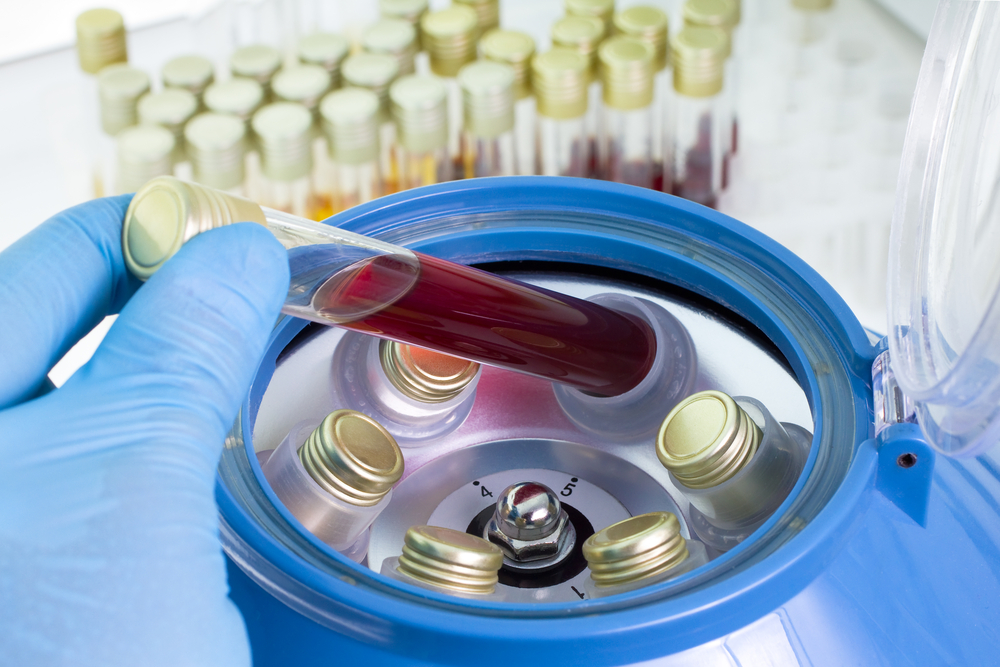
10. Centrifuge
Centrifuges are lab equipment commonly used in school science labs, especially in high school or advanced science classes, to separate components of a liquid mixture based on their density.
It works by spinning the mixture at high speeds, causing the heavier components to move towards the bottom of the tube, while the lighter components move towards the top. This process, known as centrifugation, allows for the separation of solids from liquids or liquids from other liquids.
They are used to separate substances of different densities or particle sizes in liquids, such as blood samples, to study cellular components, or in chemistry experiments.
Centrifuges are valuable tools for teaching students about the principles of centrifugal force and separation techniques.
Essential Lab equipment for Fire and Chemical Safety
This section of lab equipment essential for student and educator safety covers storage and handling of chemicals, as well as the requirements for prevention and mitigation of fire hazards. Hazardous chemical and fire safety in school science labs is a critical topic.
Safety Guidelines: Schools should adhere to prescribed safety guidelines.
1. Fire Extinguishers
Fire extinguishers are lab equipment that are necessary to quickly and effectively extinguish small fires that may occur due to chemical spills, electrical malfunctions, or other accidents. They should be easily accessible and regularly maintained to ensure they are in working condition.
2. Fire Blankets
Fire blankets are used to smother fires involving people or objects. They can be wrapped around a person or used to cover a small fire to cut off its oxygen supply and extinguish it.
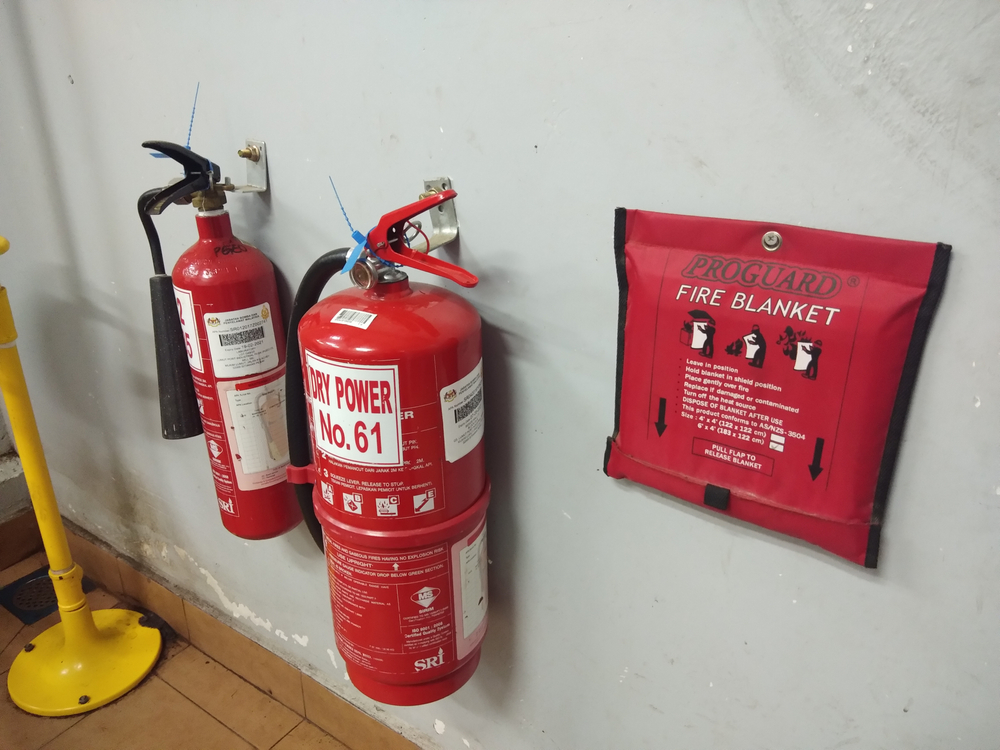
3. First Aid Kits
First aid kits are essential for treating minor injuries that may occur in the lab, such as cuts, burns, or chemical splashes. They should be stocked with basic supplies like bandages, antiseptic wipes, and burn cream.
4. Chemical Spill Kits
Chemical spill kits are also essential lab equipment for quickly and safely containing and cleaning up chemical spills in the lab. They typically contain absorbent materials, neutralizing agents, and protective gear to minimize the risk of exposure and environmental damage.
5. Chemical Storage
Chemicals should be stored properly, following guidelines for storage temperature, ventilation, and segregation of incompatible chemicals.
6. Fume Hoods
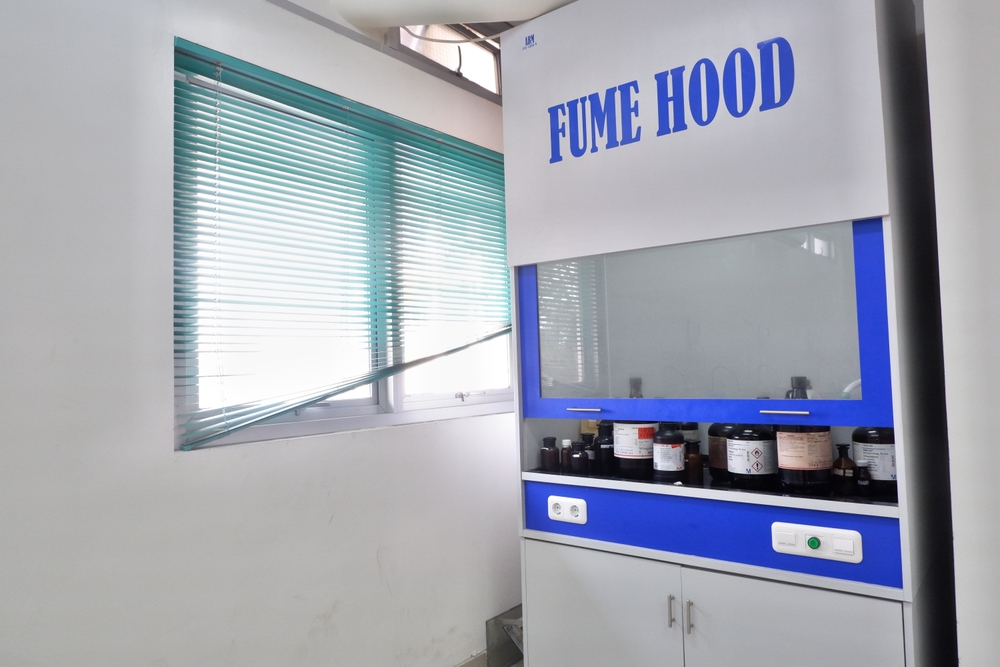
Fume hoods are essential when selecting lab equipment for removing potentially harmful fumes, vapors, and dust generated during experiments. They help protect students and teachers from exposure to hazardous chemicals and ensure a safe working environment in the lab.
7. Waste Disposal Station
Additional to all other lab equipment, school science and chemistry laboratories should have waste disposal stations for hazardous waste that complies with the applicable requirements. Proper disposal methods are crucial for safely disposing of chemicals, biological materials, and other hazardous waste generated in the lab. This helps prevent environmental contamination and ensures compliance with regulations.
Prescribed Safety Guidelines include the following:
NSTA’s Safety in the Science Classroom, Laboratory, or Field Trip guide: NSTA Safety Guide
OSHA’s Laboratory Safety Guidance: OSHA Laboratory Safety
The American Chemical Society’s Guidelines for Chemical Laboratory Safety in Academic Institutions
NFPA 45: Standard on Fire Protection for Laboratories Using Chemicals provides comprehensive guidance on fire protection and safety in educational, institutional, and industrial laboratories using chemicals.
Overall, these safety measures are vital for protecting students, teachers, and the environment in school science labs. Regular training and drills should also be conducted to ensure everyone knows how to use safety lab equipment and respond to emergencies effectively.
Conclusion
For educators, the challenge of selecting top lab equipment that is vital for creating engaging and effective lab experiences that promote curiosity and discovery in students can be overwhelming.
However, the guidance of a specialist can ease the process. Genie Scientific will have your back from the planning stage to installation, and beyond. These tools are vital for creating engaging and effective lab experiences that promote curiosity and discovery in students.

